INTRODUCTION Odds ratio (OR) and risk ratio (RR) are two commonly used measures of association reported in research studies In crosssectional studies, the odds ratio is also referred to as the prevalence odds ratio (POR) when prevalent cases are included, and, instead of the RR, the prevalence ratio (PR) is calculatedOdds ratios (OR) are commonly reported in the medical literature as the measure of association between exposure and outcome However, it is relative risk that people more intuitively understand as a measure of association Relative risk can be directly determined in a cohort study by calculating a risk ratio (RR) Rate ratios are closely related to risk ratios, but they are computed as the ratio of the incidence rate in an exposed group divided by the incidence rate in an unexposed (or less exposed) comparison group Consider an example from The Nurses' Health Study This prospective cohort study was used to investigate the effects of hormone replacement therapy (HRT) on
Case Control Study Odds Ratio Relative Risk Best Custom Academic Essay Writing Help Writing Services Uk Online Homeworknowcomlink Web Fc2 Com
Which is better odds ratio or relative risk
Which is better odds ratio or relative risk-The odds ratio of death was 028 using conditional logistic regression (18, 61)ERRATA At about the 300 mark the slide says "10,00" when it is really supposed to say "10,000" I added a pop up box to fix it Thanks to Mehdi Hedjazi for



Escholarship Umassmed Edu Cgi Viewcontent Cgi Article 1013 Context Liberia Peer
In a matched cohort study of crash data, the risk ratio of death for those who wore a seat belt compared with those unbelted was estimated as 039 (95 percent confidence interval 037, 041) using conditional Poisson regression; The difference between the odds ratio and the relative risk depends on the risks (or odds) in both groups So for any reported odds ratio, the discrepancy between that odds ratio and the relative risk depends on both the initial risk and the odds ratio itselfRelative Risk and Odds Ratio for the obese 3) Overall, you can see that decreasing the baseline incidence will decrease the odds ratio (300 in those who are nonobese versus 129 in those who are obese) Obviously, these results run counter to expected results, putting the onus on the researcher to justify them Similarly, you should find
Odds ratio can be calculated in a cohort study and in a casecontrol study The exposure odds ratio is equal to the disease odds ratio Relative risk can only be calculated in a cohort study Odds ratio can be a measure of relative risk in case control study 6When used for cohort studies and randomized clinical trials, the odds ratio is often incorrectly interpreted as the risk ratio;RR and OR are commonly used measures of association in observational studies In this video I will discuss how to interpret them and how to apply them to pat
Subsequently, the term relative risk commonly refers to either the risk ratio or the odds ratio However, only under certain conditions does the odds ratio approximate the risk ratio Figure 1 shows that when the incidence of an outcome of interest in the study population is low (The relative merits of risk ratios and odds ratios Arch Pediatr Adolesc Med 09;Odds ratio can be calculated in a cohort study and in a casecontrol study − The exposure odds ratio is equal to the disease odds ratio Relative risk can only be calculated in a cohort study 33 When Is Odds Ratio a Good Estimate of Relative Risk?
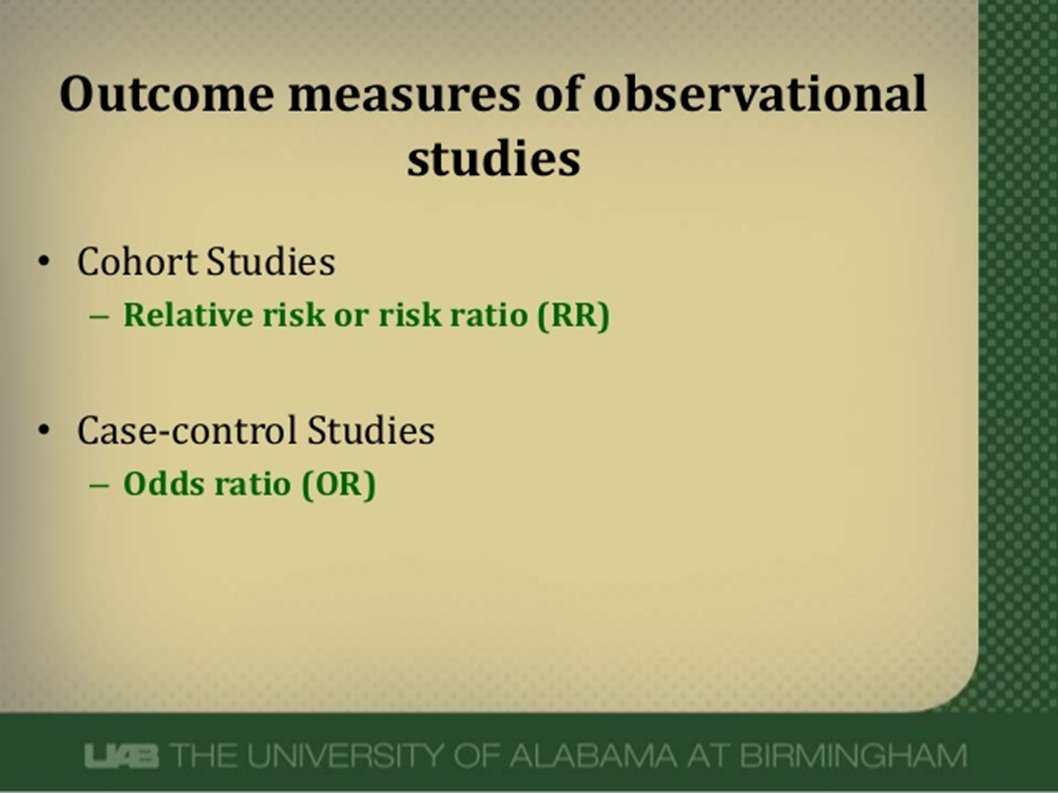



Abdullah Kharbosh Auf Twitter What Does An Odds Ratio Or Relative Risk Mean By Ebmteacher Casecontrol Cohort T Co Shfiaepl57 عبر Slideshare
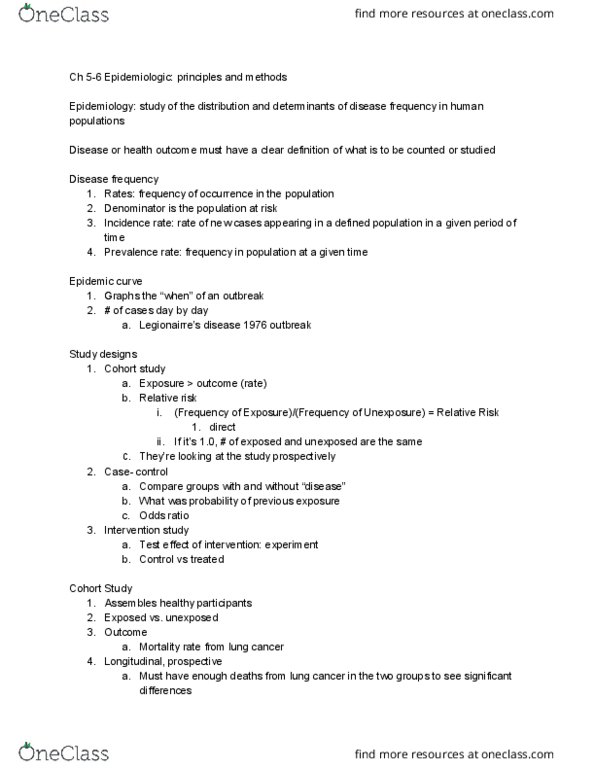



Phs 2101 Lecture Notes Summer 19 Lecture 4 Relative Risk Cohort Study Odds Ratio
The odds ratio can also be used to determine whether a particular exposure is a risk factor for a particular outcome, and to compare the magnitude of various risk factors for that outcome OR=1 Exposure does not affect odds of outcome OR>1 Exposure associated with higher odds of outcome ORRisk Estimate 2250 1090 4643 00 1076 795 994 250 Odds Ratio for FACOTOR (Placebo / Aspirin) For cohort DISEASE = Yes For cohort DISEASE = No N of Valid Cases Value Lower Upper 95% Confidence Interval Relative risk Odds ratio Click Statistics and check the Risk box in the Crosstabs Statistics dialog window to obtain risk This format is commonly expressed in cohort studies using logistic regression When the incidence of an outcome is low (



Odds Ratios Need To Be Graphed On Log Scales Andrew Wheeler




Cureus What S The Risk Differentiating Risk Ratios Odds Ratios And Hazard Ratios
Risk ratios When risks are computed in a study, the risk ratio is the measure that compares the Risk exposed to the Risk unexposed The risk ratio is defined as the risk in the exposed cohort (the index group) divided by the risk in the unexposed cohort (the reference group) A risk ratio may vary from zero to infinity Risk Ratio = a / (ab"OR" stands for "odds ratio" and "RR" stands for "relative risk" A retrospective cohort study, also called a historic cohort study, is a longitudinal cohort study used inConverting Odds Ratio to Relative Risk in Cohort Studies with Partial Data Information Zhu Wang Connecticut Children's Medical Center Abstract In medical and epidemiological studies, the odds ratio is a commonly applied measure to approximate the relative risk or risk ratio in cohort studies It is well known tha such
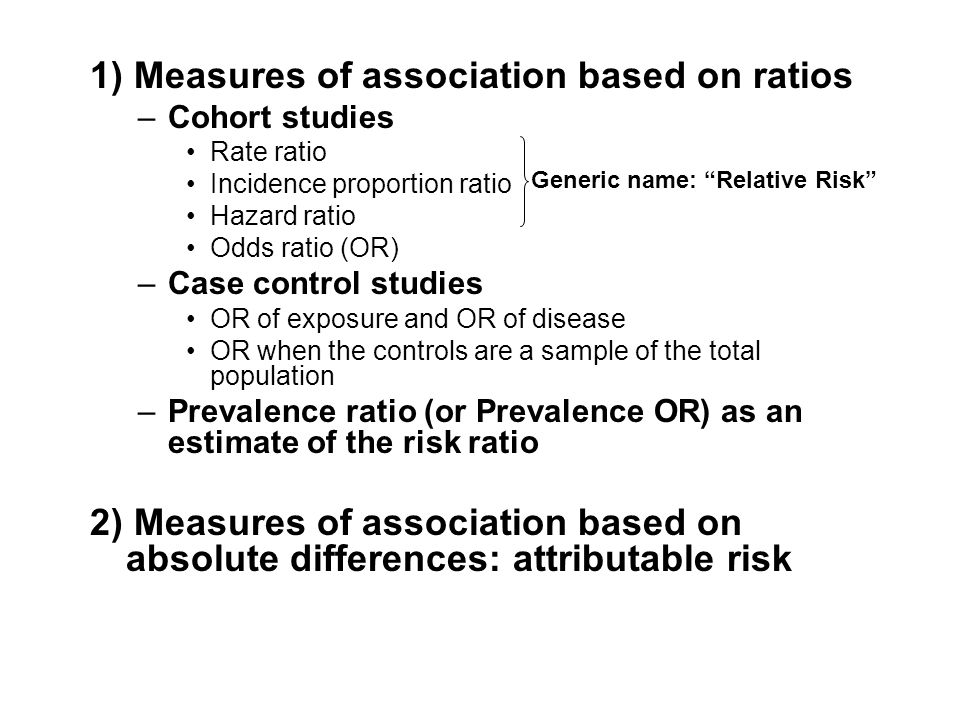



Measures Of Association Ppt Download




What Does An Odds Ratio Or Relative Risk Mean
–45 5 McNutt L, Wu C, Xue X, Hafner JP Estimating the relative risk in cohort studies and clinical trials of common outcomes Am J Epidemiol 03; 2) Cohort studies will have information about persontime at risk, and so the desired outcomes are often incidence rates, population attributable risk, or risk ratios The odds ratio estimate for rare outcomes will approximately estimate the risk ratio in this design, but it makes more sense to compute the risk ratio directlyThe relative risk is best estimated using a population sample, but if the rare disease assumption holds, the odds ratio is a good approximation to the relative risk — the odds is p / (1 − p), so when p moves towards zero, 1 − p moves towards 1, meaning that the odds approaches the risk, and the odds ratio approaches the relative risk
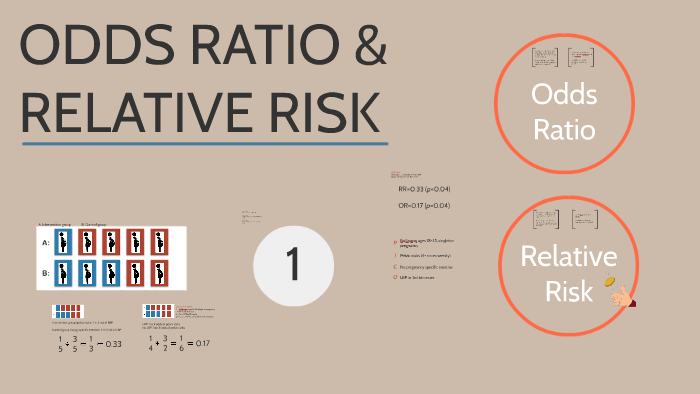



Odds Ratio Relative Risk By Susi Delaney
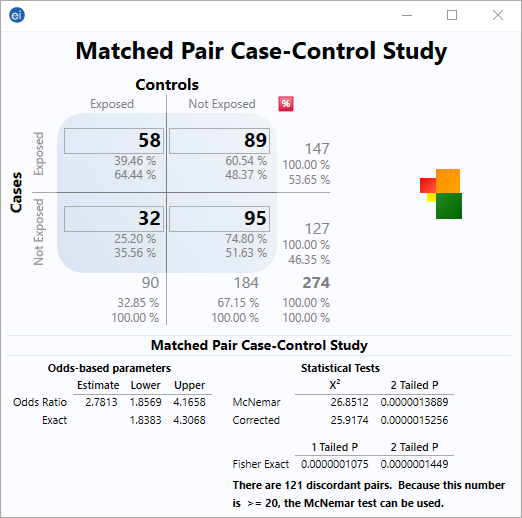



Matched Pair Case Control Statcalc User Guide Support Epi Info Cdc
Case control studies are relatively inexpensive and less timeconsuming than cohort studies In this case the odds ratio (OR) is equal to 16 and the relative risk (RR) is equal to 865 What does a risk ratio of 075 mean? Other O does not have an R (cOhort), which means the other group does not have the risk factor Compare the two to see who gets the disease How to remember that case control studies measure odds ratio and cohort studies measure relative risk You take surgical "cases" to the "OR" (Operating room) Case control study Odds Ratio cohoRRRRRRtPressed as the risk ratio in cohort studiesandclinicaltrialsWhentheriskratio cannot be obtained directly (such as in a casecontrolstudy),theoddsratioiscalculated and often interpreted as if it were the risk ratio Subsequently, the term relative risk commonly refers to either the risk ratio or the odds ratio However, only under certain



Escholarship Umassmed Edu Cgi Viewcontent Cgi Article 1013 Context Liberia Peer
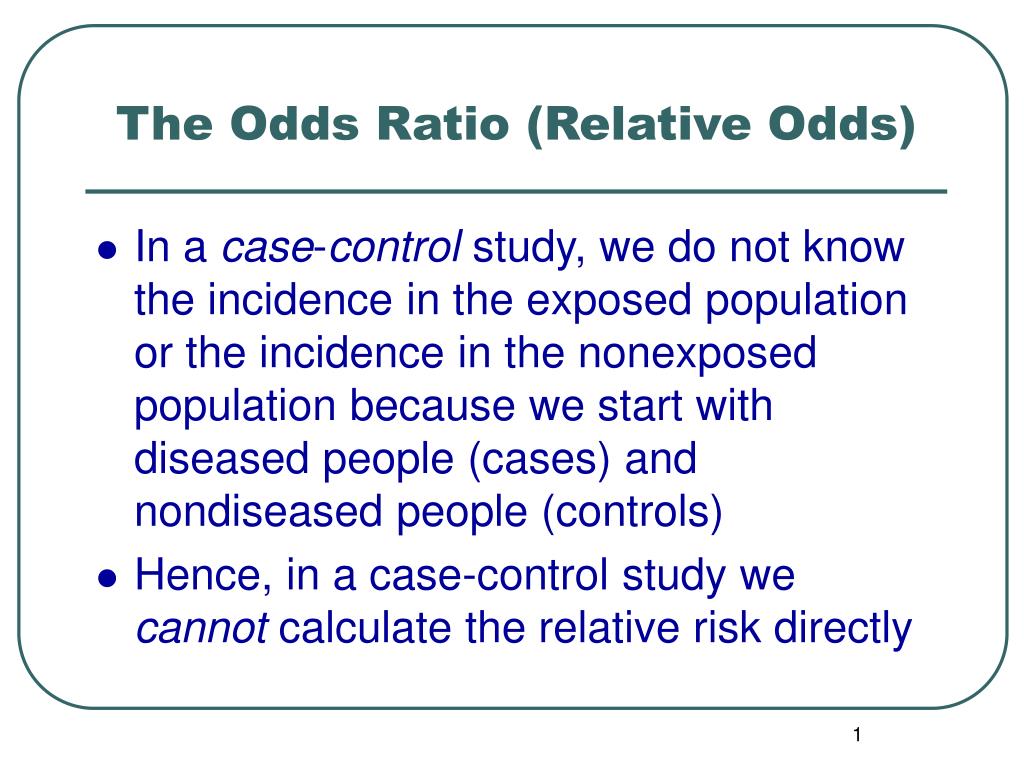



Ppt The Odds Ratio Relative Odds Powerpoint Presentation Free Download Id 6056
Relative Risk (RR) is a ratio of probabilities or put another way it is one probability divided by another Odds Ratio (OR) is a ratio or proportion of odds I just remember that odds ratio is a ratio of odds and probability isn't a ratio of odds (AKA it is the other option) Relative Risk = Probability / Probability Risk ratios, odds ratios, and hazard ratios are three ubiquitous statistical measures in clinical research, yet are often misused or misunderstood in their interpretation of a study's results A 01 paper looking at the use of odds ratios in obstetrics and gynecology research reported 26% of studies (N = 151) misinterpreted odds ratios as risk ratios , while a In case–control studies, the odds ratio is the appropriate effect estimate, and the odds ratio can sometimes be interpreted as a risk ratio or rate ratio depending on the sampling method 1 – 4 However, in cohort studies and RCTs, odds ratios are often interpreted as risk ratios
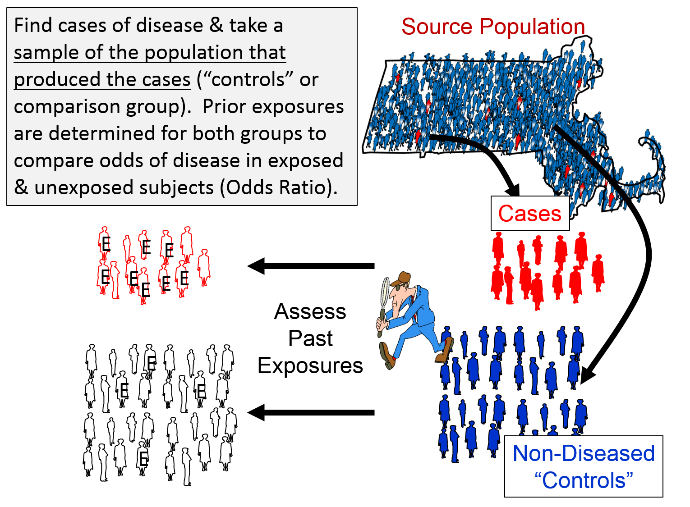



A Nested Case Control Study




A Prospective Cohort Study B Case Control Study C Chegg Com
Davies et al (1) state that the odds ratio is a common measure in casecontrol studies, cohort studies, or clinical trails Unfortunately, this first sentence of their article is not correct For different study designs, OR should only be used as a measure of effect size when RR can not be estimated directlyHi, Been reading through a research paper that used a prospective cohort study, but in the results table for measures of association, the odds ratio was used instead of relative risk Here's the key Relative Risk looks to the future for the effect of a particular cause hence it is used in prospective studies say a cohort study Lets compare the above with Odds Ratio The Odds Ratio can be addressed by asking te following question How many times more likely is a diseased group to have been exposed to a risk factor as




What Is The Difference Between The Risk Ratio Rr And The Odds Ratio Or Quora




How To Interpret And Use A Relative Risk And An Odds Ratio Youtube
Percent, population attributable risk percent, relative risk, odds, odds ratio, and others The concept and method of calculation are explained for each of these in simple terms and with the help of examples The interpretation of each is presented in plain English rather than in technical language Clinically useful notes are provided, We illustrated both relative risks and odds ratios using bar charts, then looked at the types of study for which each statistic is suited We demonstrated calculation of relative risks and odds ratios through analysis of tabled data from a recent published longitudinal study, using a 2 × 2 table and R, the opensource statistical programming The odds ratio (OR) or the ratio of odds of exposure is thus given by a/cb/d (or ad/bc) The odds ratio is generally a good estimate of the relative risk The terms odds ratio and relative risk are in fact interchangeable when used in casecontrol studies Population and hospitalbased casecontrols studies



Case Control Study Odds Ratio Relative Risk Best Custom Academic Essay Writing Help Writing Services Uk Online Homeworknowcomlink Web Fc2 Com




A Beginner S Guide To Interpreting Odds Ratios Confidence Intervals And P Values Students 4 Best Evidence
When the disease is rare, the odds ratio will be a very good approximation of the relative risk The more common the disease, the larger is the gap between odds ratio and relative risk In our example above, p wine and p no_wine were 0009 and 0012 respectively, so the odds ratio was a good approximation of the relative risk OR = 0752 and RRThe quote surely just means to say that the odds ratio is a relative risk measure rather than an estimate of the relative risk, which as already point out is only approximately the case in cohort studies/randomized trials for very low proportions By relative risk measure I mean something that is given relative to some comparison group in a way that the absolute difference depends on theCalculate exposure odds ratios 2 1 1 2 A B AB ˆOR = This statistic, which is just the crossproduct ratio of the entries in the 2by2 table, is an estimate of the relative incidence (relative risk) of the outcome associated with exposure (assuming data are errorfree) The confidence interval for the OR parameter is OR e OR z SE ln ˆ ln ˆ




Forest Plot Of Relative Risks And Odds Ratios Of Lung Cancer Associated Download Scientific Diagram




Study Design Comparison Cohort Study Relative Risk
Definition The Odds Ratio is a measure of association which compares the odds of disease of those exposed to the odds of disease those unexposed Formulae OR = (odds of disease in exposed) / (odds of disease in the nonexposed) Example I often think food poisoning is a good scenario to consider when interpretting ORs Imagine a group of friends went out toRisk Ratio 31 • Can also be called Relative Risk or RR Exposure odds ratio • Similar to risk ratio from cohort study • PR= Prevalence of disease in exposed group/ Prevalence of disease in unexposed group OR Definition of risk ratio A risk ratio (RR), also called relative risk, compares the risk of a health event (disease, injury, risk factor, or death) among one group with the risk among another group It does so by dividing the risk (incidence proportion, attack rate) in group 1 by the risk (incidence proportion, attack rate) in group 2




I Remember This By Thinking About A Group Of Pirates Group Cohort All Saying Arrrrr That Reminds You Th Cohort Study Definitions How To Memorize Things




Pdf When To Use The Odds Ratio Or The Relative Risk
The odds ratio (OR) is the ratio of the odds of cancer in smokers to the odds of cancer in nonsmokers OR = (a/b)/ (c/d) = (ad)/ (bc) The risk ratio (RR), also called the relative risk, is the ratio of the probability of cancer in smokers to the probability of cancer in nonsmokers Given that you know a, b, c, and d, you can compute either ofIn epidemiological terms, the odds ratio is used as a point estimate of the relative risk in retrospective studies Odds ratio is the key statistic for most casecontrol studies In prospective studies, Attributable riskor risk difference is used to quantify risk in the exposed group that is attributable to the exposure If the relative risk is 1, the tutoring made no difference at all If it's above 1, then the tutored group actually had a higher risk of failing than the controls Odds Ratio The odds ratio is the ratio of the odds of an event in the Treatment group to the odds




Relative Risk And Odds Ratio Usmle The Journey




Comparison Of Three Methods For Estimating Relative Risk In A Cohort Download Table
9222 Measures of relative effect the risk ratio and odds ratio Measures of relative effect express the outcome in one group relative to that in the other The risk ratio (or relative risk) is the ratio of the risk of an event in the two groups, whereas the odds ratio is the ratio of the odds of an event (see Box 92a)For both measures a value of 1 indicates that the estimated effectsFor prospective studies (clinical trials/cohort) quote Relative Risk For casecontrol studies quote Odds Ratio Odds Ratio approximates Relative Risk for a rare disease in casecontrol studies For a crosssectional study one has a choice between Odds Ratio and Relative Risk 36 Odds ratio vs relative risk Odds ratios and relative risks are interpreted in much the same way and if and are much less than and then the odds ratio will be almost the same as the relative risk In some sense the relative risk is a more intuitive measure of effect size Note that the choice is only for prospective studies were the distinction




Ppt Main Points To Be Covered Powerpoint Presentation Free Download Id
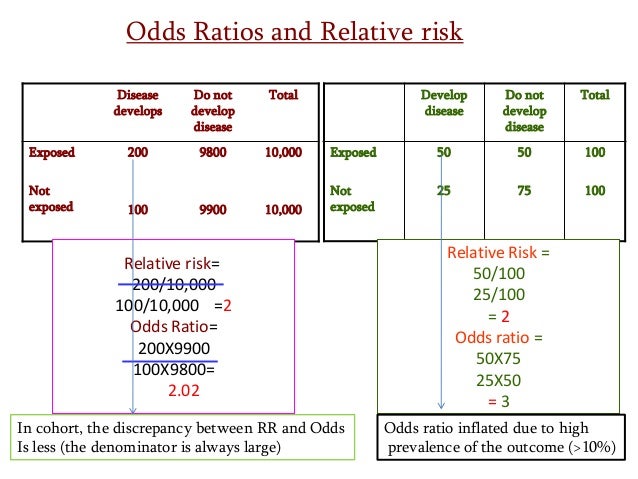



Estimating Risk
The odds ratio then provides an overestimation of the risk ratio, especially when the outcome is frequent The use of logistic regression to adjust for confounding is one of the reasons that odds ratios are presentedThe Odds Ratio The odds of disease in the exposed group are 7/10, and the odds of disease in the nonexposed group are 6/56 If I compute the odds ratio, I get (7/10) / (5/56) = 656, very close to the risk ratio that I computed from data for the entire population We will consider odds ratios and casecontrol studies in much greater depth in




When Can Odds Ratios Mislead The Bmj
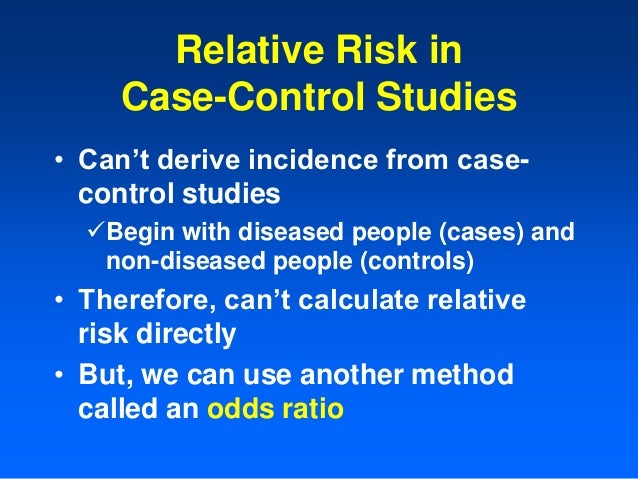



Relative And Atribute Risk




Definition And Calculation Of Odds Ratio Relative Risk Stomp On Step1




Odds Ratios And Risk Ratios Youtube




Frontiers Odds Ratio Or Prevalence Ratio An Overview Of Reported Statistical Methods And Appropriateness Of Interpretations In Cross Sectional Studies With Dichotomous Outcomes In Veterinary Medicine Veterinary Science




How To Calculate An Odds Ratio Youtube




Relative And Attributable Risks Absolute Risk Involves People
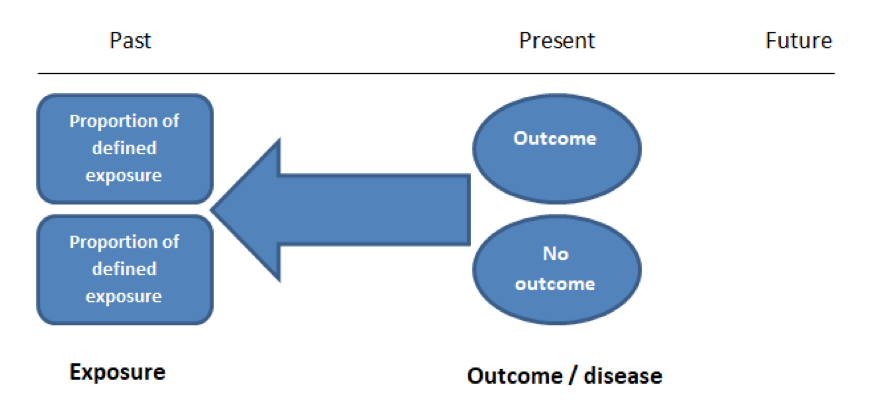



Case Control And Cohort Studies A Brief Overview Students 4 Best Evidence




The Difference Between Relative Risk And Odds Ratios The Analysis Factor




Odds Ratio Wikipedia



Research Statistics Basics Contents 1 Basic Concepts 2 References Basic Concepts Null Hypothesis The Hypothesis That The Independent Variable Has No Effect On The Dependent Variable For Example Steroids Do Not Improve Outcomes In Ards Would Be




Table 1 From The Relative Merits Of Risk Ratios And Odds Ratios Semantic Scholar



Silo Tips Download Transcript Measuring Risk In Epidemiology B D A C Measuring Risk In Epidemiology



Www Jstatsoft Org Article View V055i05 V55i05 Pdf




Research Techniques Made Simple Interpreting Measures Of Association In Clinical Research Sciencedirect




Chapter 6 Choosing Effect Measures And Computing Estimates Of Effect Cochrane Training
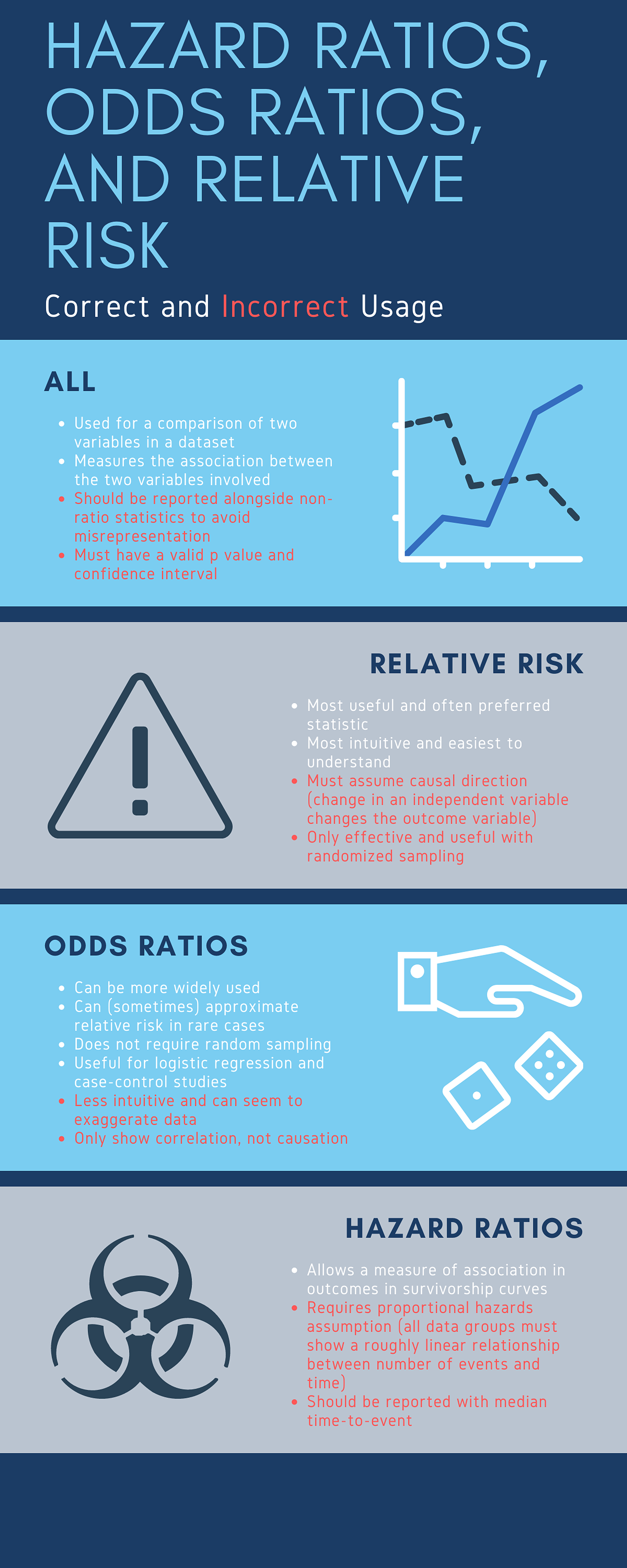



Cureus What S The Risk Differentiating Risk Ratios Odds Ratios And Hazard Ratios



Support Sas Com Resources Papers Proceedings11 345 11 Pdf




Relative Risk Odds Ratios Youtube




Figure 2 From Secondhand Smoke Exposure And Risk Of Lung Cancer In Japan A Systematic Review And Meta Analysis Of Epidemiologic Studies Semantic Scholar



Icare An R Package To Build Validate And Apply Absolute Risk Models




Measures Of Effect Relative Risks Odds Ratios Risk Difference And Number Needed To Treat Sciencedirect



Definition And Calculation Of Odds Ratio Relative Risk Stomp On Step1
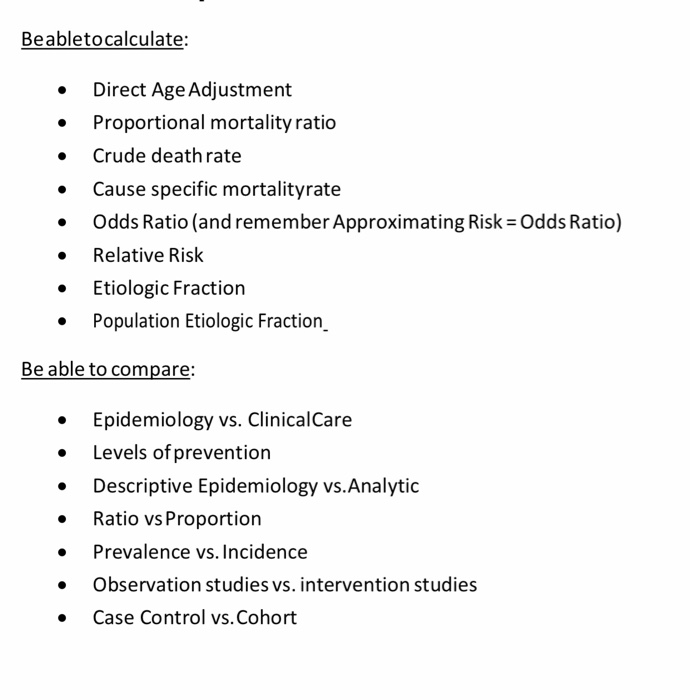



Beabletocalculate Direct Age Adjustment Chegg Com
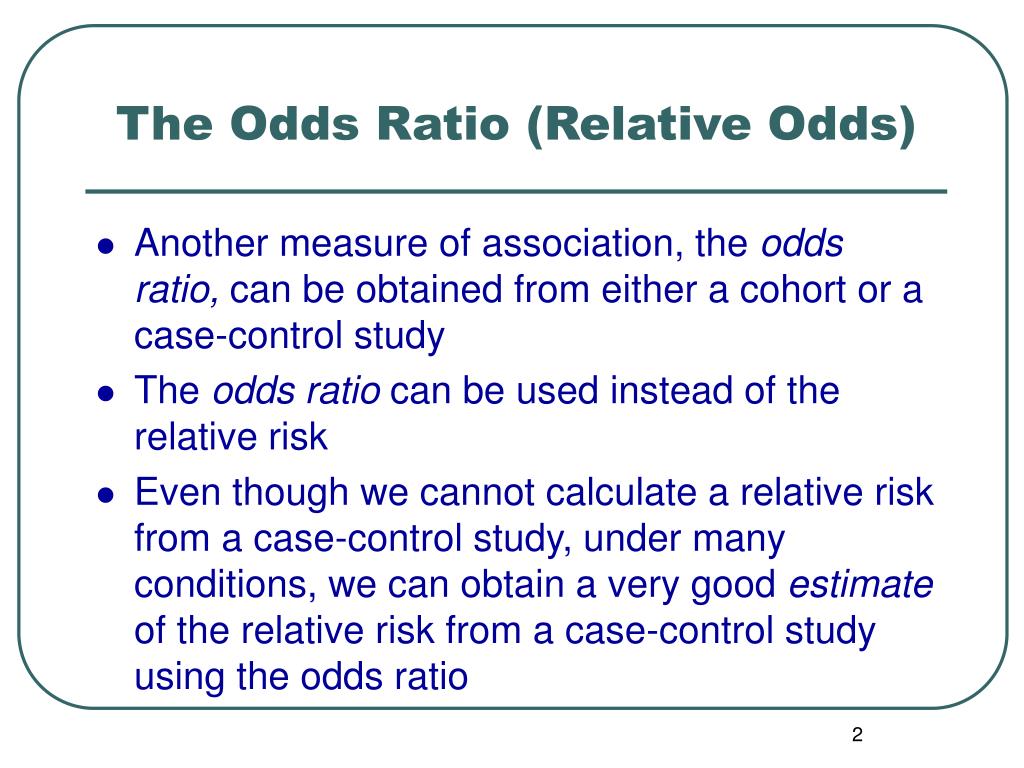



Ppt The Odds Ratio Relative Odds Powerpoint Presentation Free Download Id 6056
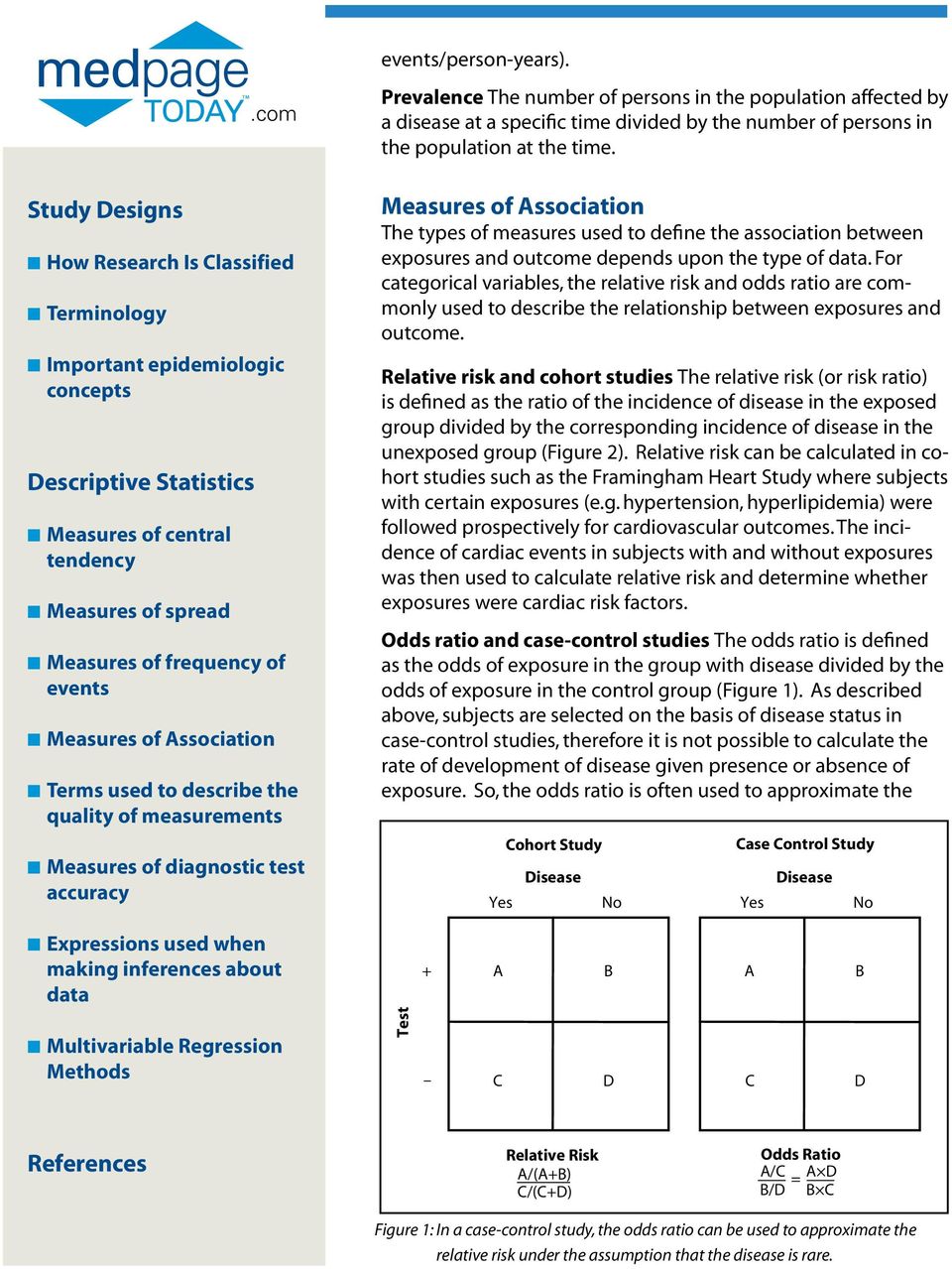



Guide To Biostatistics Pdf Free Download




Measures Of Association Ppt Download



9 10 11 12 13 14 15 16 17 18 19 21 22 23 24 25 26 27 28 29 30 Review Odds Ratios Are Calculated From Case Control Studies Which Are Described On Slide 14 Odds Ratios Are Only Estimates Of Relative Risks Since True Incidence Rates Cannot Be




Cph Exam Review Epidemiology Ppt Download




Gordis 12 Biostatistics Risk Relative Risk Odds Ratio Flashcards Quizlet




Tutorial 5 Answer Odds Ratio Relative Risk




Relative Risk Wikipedia



Q Tbn And9gcr Ttka12jaocnx Gn3ox9ci1ggq18vcw9359i6hq2cschyusam Usqp Cau
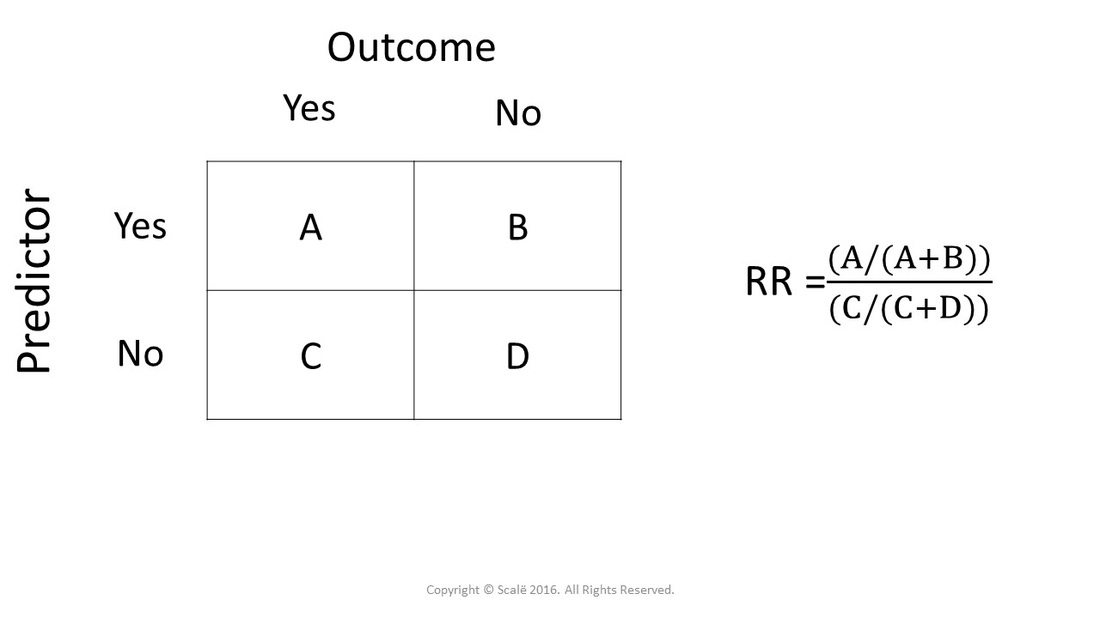



Calculate Relative Risk With 95 Confidence Intervals
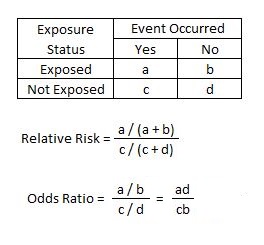



Relative Risk Article



1




1 Relative Risks Odds Ratios Or Hazard Ratios Of Risk Factors For Download Table




1 The Odds Ratio Relative Odds In A Case Control Study We Do Not Know The Incidence In The Exposed Population Or The Incidence In The Nonexposed Population Ppt Download
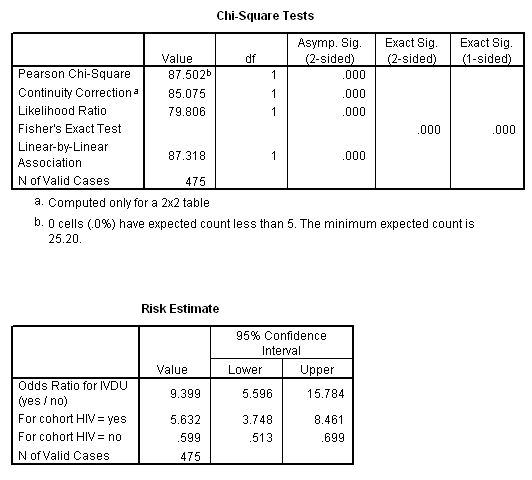



Marg Innovera




How To Use Spss For Contingency Table Relative Risk Odds Ratio




Relative Risk Or Odds Ratio For Cardiovascular Disease Incidence Download Scientific Diagram



Absolute Risk Vs Relative Risk Vs Odds Ratio Pp Made Easy In Population Perspective Made Easy On Vimeo
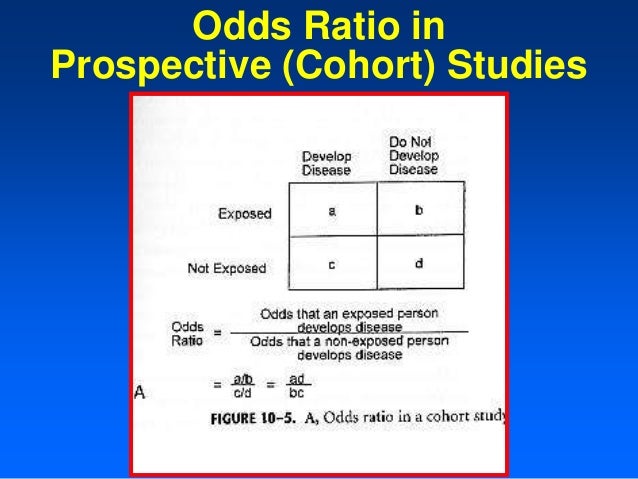



Relative And Atribute Risk
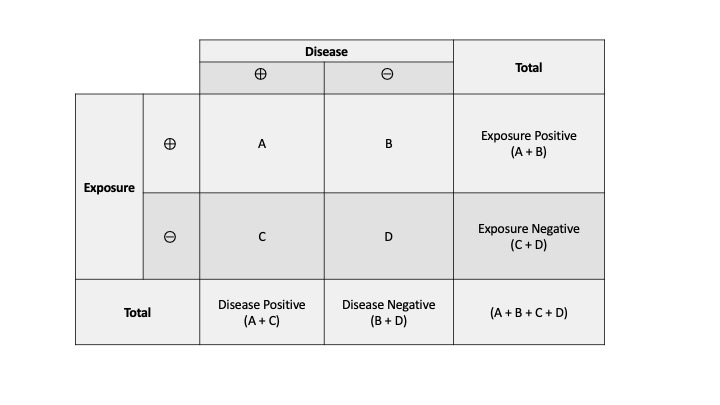



Measures Of Association Stats Medbullets Step 1



1




Reporting The Results Sage Research Methods
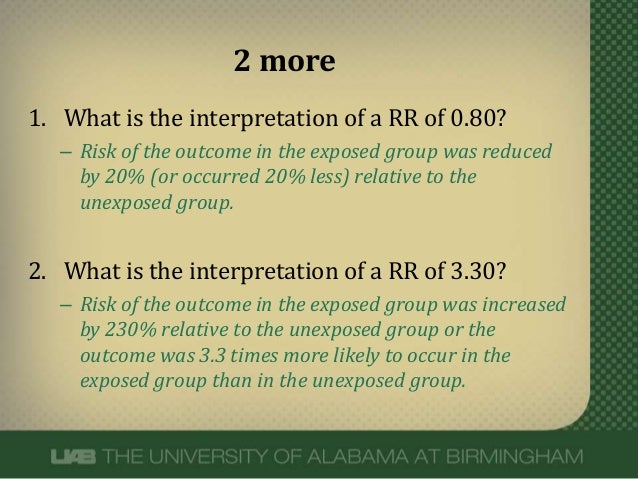



What Does An Odds Ratio Or Relative Risk Mean




Measures Of Disease Association Ppt Download
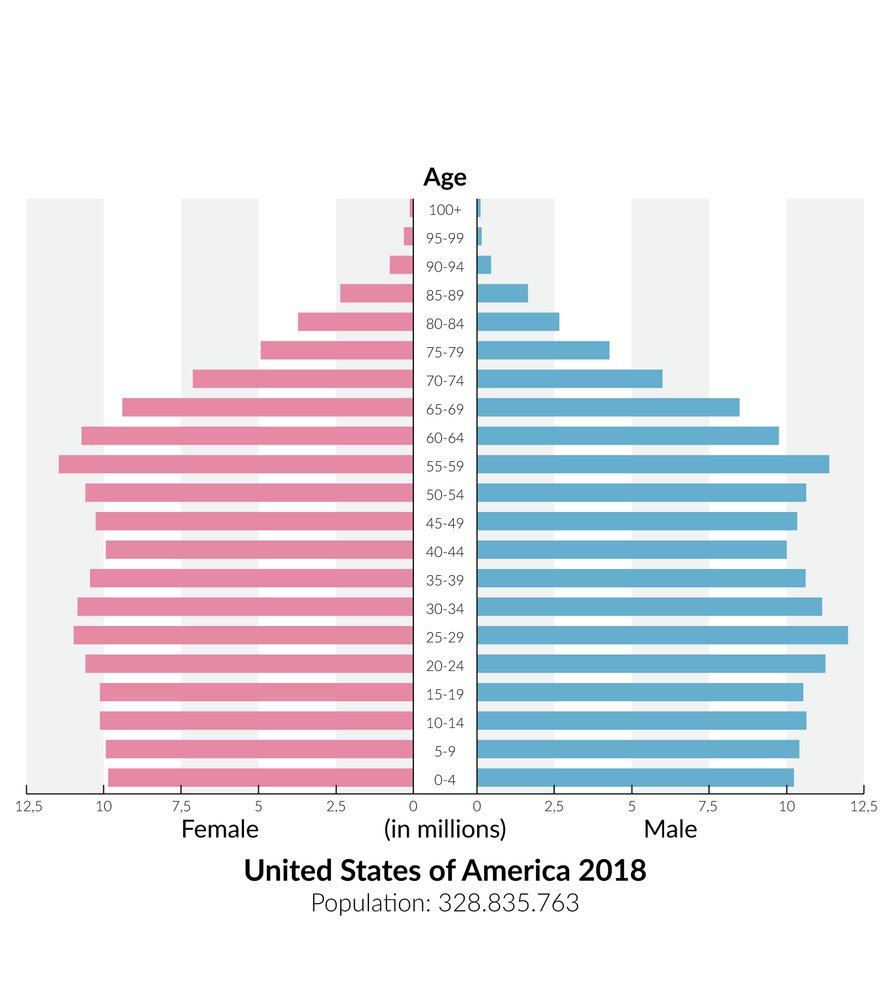



Epidemiology Amboss




Relative Risk Versus Odds Ratio Usmle Biostatistics 4 Youtube



Absolute Risk Vs Relative Risk Vs Odds Ratio Pp Made Easy In Population Perspective Made Easy On Vimeo




Fisioterapeuta Luis Miguel Brazao Gouveia Guide To Biostatistics




How To Use Spss For Contingency Table Relative Risk Odds Ratio Pdf Document




Using Odds Ratio In Case Control Studies Youtube



What Is The Difference Between The Risk Ratio Rr And The Odds Ratio Or Quora



Http Osctr Ouhsc Edu Sites Default Files 02 Module7partinotes Pdf




Measures Of Effect Relative Risks Odds Ratios Risk Difference And Number Needed To Treat Sciencedirect




Relative Risk Wikipedia




Calculation Of Relative Risks Rr And Odd Ratios Or Download Table




Definition And Calculation Of Odds Ratio Relative Risk Stomp On Step1




A Beginner S Guide To Interpreting Odds Ratios Confidence Intervals And P Values Students 4 Best Evidence
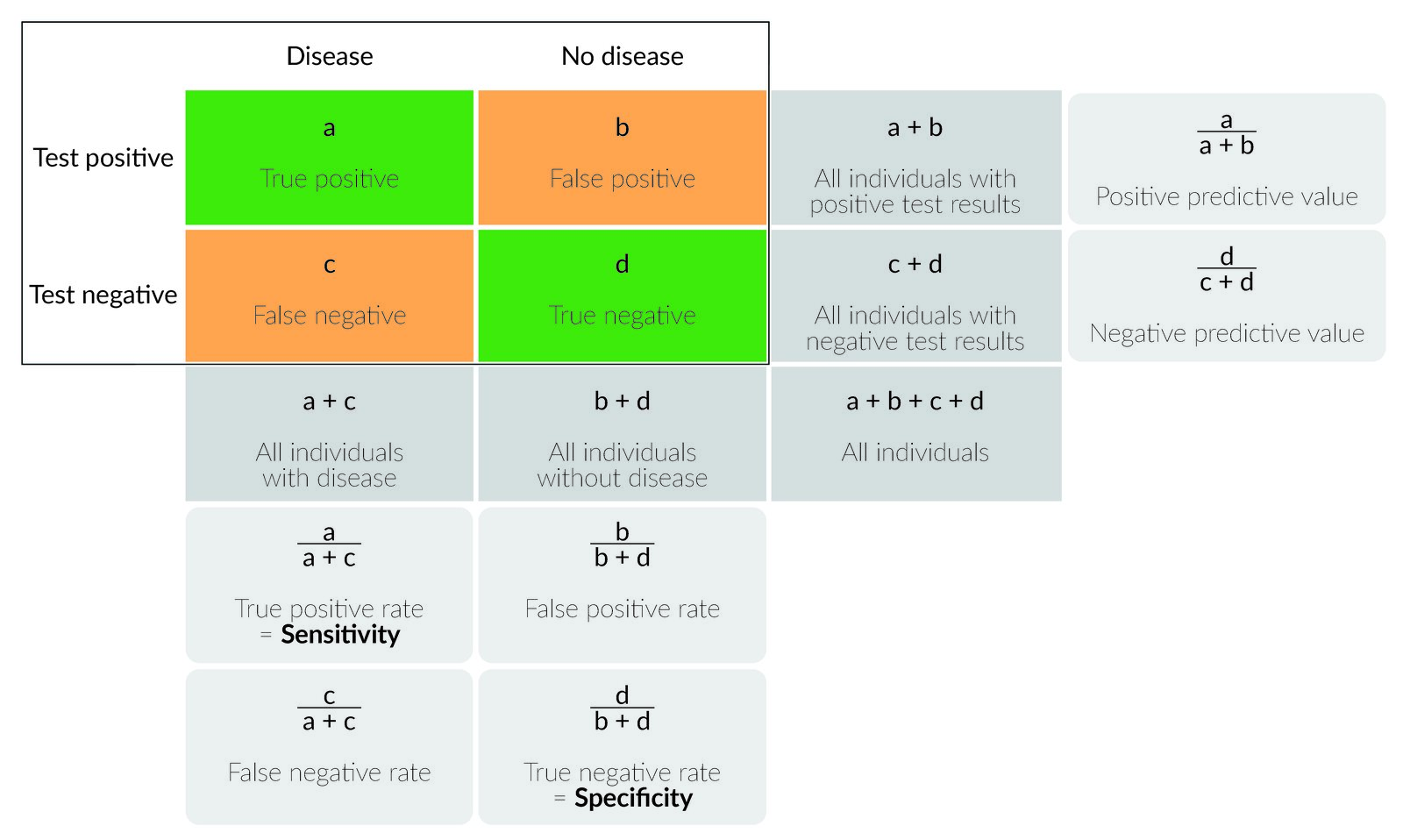



Epidemiology Amboss




Calculate Relative Risk With 95 Confidence Intervals




Relative Risks And Odds Ratios What S The Difference Mdedge Family Medicine



Absolute Risk Vs Relative Risk Vs Odds Ratio Pp Made Easy In Population Perspective Made Easy On Vimeo




Estimating Risk




Fully Adjusted Odds Ratio Or Relative Risk For Hypertension Compared Download Scientific Diagram
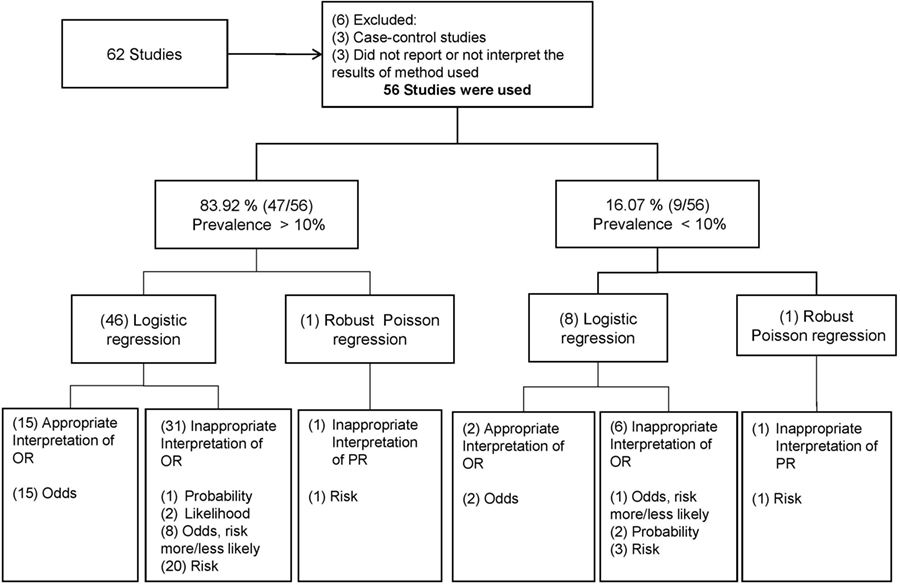



Frontiers Odds Ratio Or Prevalence Ratio An Overview Of Reported Statistical Methods And Appropriateness Of Interpretations In Cross Sectional Studies With Dichotomous Outcomes In Veterinary Medicine Veterinary Science




Introduction To 2 X 2 Tables Epidemiologic Study Design And Measures Of Association Foundations Of Epidemiology



Q Tbn And9gctxz8owky Sul84xtk4ggzacxwhkmhguhlxwyjj9avufagdrhwm Usqp Cau




Descriptive Epidemiology Dr Kanupriya Chaturvedi How We View




Believability Of Relative Risks And Odds Ratios In Abstracts Cross Sectional Study The Bmj




Odds Ratio Wikipedia




Main Points To Be Covered Measures Of Association In Case Control Studies Prevalent Controls Design Odds Ratio Vs Relative Risk And The Rare Disease Ppt Download




Statistics For Afp Dr Mohammad A Fallaha Afp




Relative Risk And Absolute Risk Definition And Examples Statistics How To




Retrospective Cohort Study Wikipedia




Risk Differences And Rate Differences



Case Control Study Vs Cohort Study Pp Made Easy On Vimeo




Analytical Studies Note Cohort Study Gives Incidence Relative Risk A R P A R Natural History Of Disease Cohort Study Case Control Study Study



0 件のコメント:
コメントを投稿